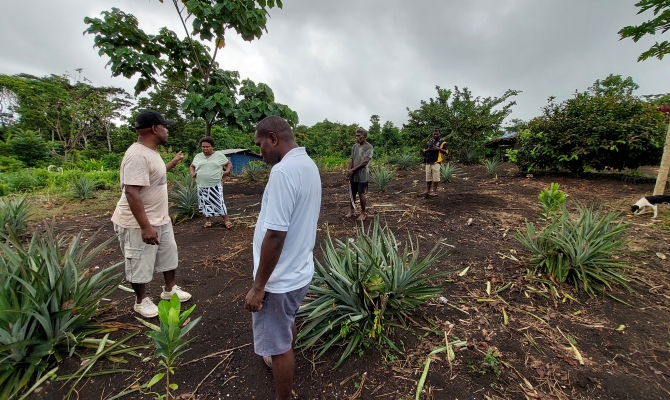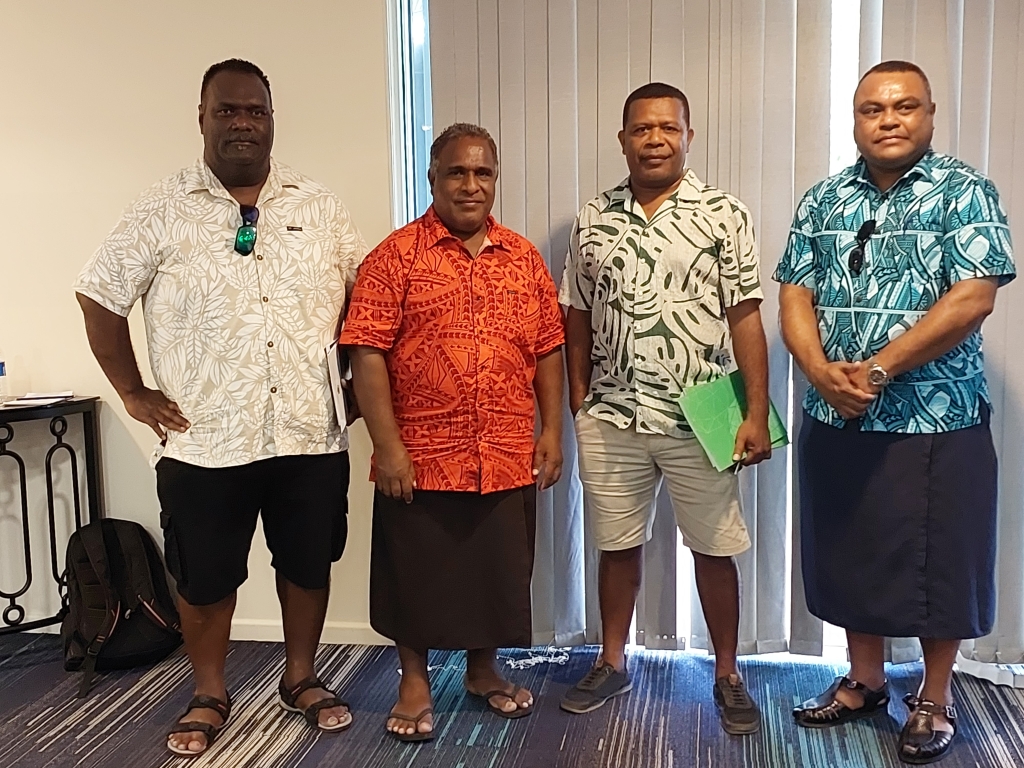
19 June 2023, Honiara Solomon Islands - The Botanic Gardens in Honiara is an important space for Solomon Islands. Spread over an estimated 19 hectares, the gardens showcase a range of local and exotic plant species and provides a sanctuary for native fauna, including a vast array of reptiles, birds and insects.
Due to limited resources, insufficient management and competing land uses, however, the gardens located two kilometres from the city centre in Rove, has deteriorated over the years.
The good news is that through the €12 million EU funded IntraACP GCCA+ Pacific Adaptation to Climate Change and Resilience Building (PACRES) project, work is underway to restore the gardens to its original state to reflect the aspirations for which it was designed. A key part of the work is the Honiara Botanical Gardens Landscape Architecture Master Plan, which was launched by the Solomon Islands Ministry of Environment, Climate Change, Disaster Management and Meteorology (MECDM) Deputy Secretary Technical (MECDM), Mr Chanel Iroi, last week at the Heritage Park Hotel.
Mr Iroi said the current state of the garden is a distant memory of what he remembers when he grew up on the island nation.

“This is a very important space for our community for many reasons and it is why we are very pleased that there is now a plan to try and restore it,” he said. “The Honiara Botanical Gardens Management and Business Plan 2020-2030 identifies specific activities to be included in a Honiara Botanical Gardens Landscape Master Plan. A 1965 design provided a very good base network of paths, open spaces, and some buildings with which to work. However, the Landscape Architecture Master Plan proposes some great ideas, integrating what already exists on site and combining them with new elements to expand and develop the gardens to reflect the aspirations and its principles.”
The Director of the Botanic Gardens and National Herbarium, Mr Myknee Sirikolo said “the Honiara Botanic Gardens is a Forest in the City" and contributes to providing natural solutions and resilience of Honiara's urban residents."
PACRES funded the Honiara Botanical Gardens Landscape Architecture Master Plan, developed in accordance with the Honiara Botanical Garden Management and Business Plan. A consultant was funded to collaborate with MECDM, the Honiara City Council (HCC), Ministry of Forestry and Research, Ministry of Culture and Tourism, Solomon Water, Solomon Islands National University, University of the South Pacific, Ministry of Infrastructure and Development and the Botanical Garden Management Committee on the plan.
PACRES Project Manager, Mr. Semi Qamese, said SPREP is pleased to see the work being done to help communities in the Solomon Islands.
“We look forward to seeing the outcome of the work being done,” he said. “We are pleased to have been able to play a small role in returning what is obviously an important space for the community in Honiara and Solomon Islands to its former glory.”
The Honiara Botanical Gardens Landscape Architecture Master Plan was one of several national documents launched, including the Honiara CBD Landscaping and Greening Master Plan.

In addition, SPREP through the Pacific Ecosystem-based Adaptation to Climate Change project (PEBACC) supported the establishment of the Botanical Gardens Management Committee to coordinate all activities amongst national stakeholders for the restoration of the Botanical Gardens.
Solomon Islands is one of five Pacific ACP countries where the €12 million EU funded IntraACP GCCA+ Pacific Adaptation to Climate Change and Resilience Building (PACRES) is scaling up adaptation/ecosystem-based adaptation pilots. The Project is being implemented jointly by the Secretariat of the Pacific Regional Environment Programme (SPREP), the Pacific Community (SPC) and the University of the South Pacific (USP).
This month’s visit by the PACRES project team to the Solomon Islands wrapped up the activities. Among the activities is the extension of the boundary of the Barana Nature and Heritage Park (BNHP) to include Lunga and Mataniko catchments (conserve water source for Honiara), build nurseries and planted five hectares of trees at the BNHP with the support of the BNP committee. The project also used vetiver and bamboos and sandbags mix to stabilise critical banks of the Mataniko River that communities live in including tree planting at riparian zones.
PACRES developed the Honiara CBD Greening Master plan which is one of the guides used by the 2023 Pacific Games Committee to green the city of Honiara. The SPREP PEBACC+ project is now active and will build on the activities completed by PACRES in Honiara, promoting the use of Ecosystem-based Adaptation (EbA) approaches to reduce vulnerability and increase resilience to climate change in the Mataniko River watershed, Botanic Garden (BG), Barana Nature and Heritage Park (BNHP) and Honiara CBD. PACRES also funded the review of Solomon Islands Nationally Determined Contribution (NDC) and the National Climate Change Policy.
PACRES serves communities in 15 Pacific countries, namely the Cook Islands, Fiji, Federated States of Micronesia (FSM), Kiribati, Republic of the Marshall Islands (RMI), Nauru, Niue, Palau, Papua New Guinea (PNG), Samoa, Solomon Islands, Timor-Leste, Tonga, Tuvalu and Vanuatu.